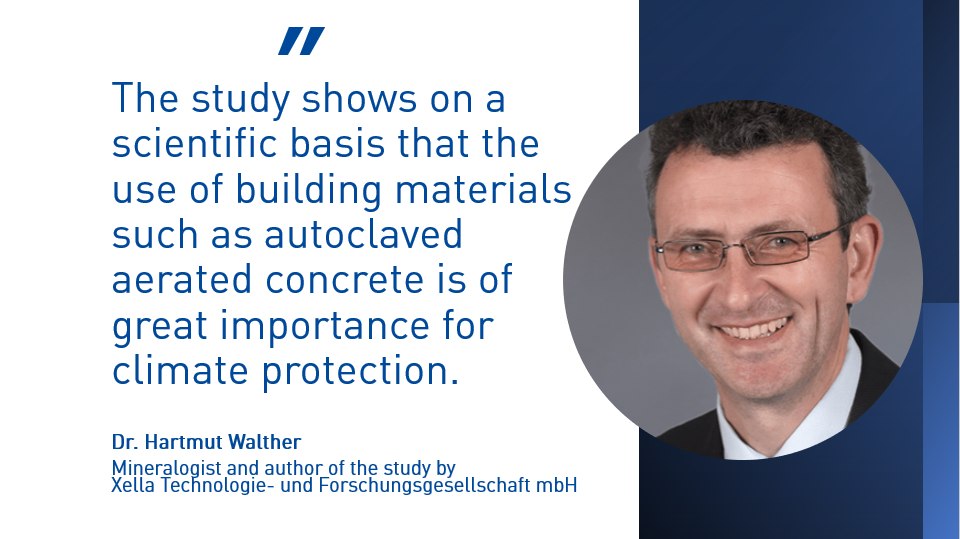For some years now, we have been looking at how the CO2 footprint of our products can be reduced. Particularly in the manufacturing process: even though little energy is needed to produce autoclaved aerated concrete itself - the products are autoclaved at around 180 degrees. The current CO2 footprint of AAC is determined up to 80 per cent by the binders used, cement and lime.
Little research has been done, however, on the extent to which large amounts of CO2 are in turn stored during the use of buildings. Xella Technologie und Forschungsgesellschaft has investigated this in recent years and published the associated study in the renowned AAC Worldwide Magazine. Result: In the process of recarbonization, a large part of the CO2 released during the burning of cement and quicklime is reabsorbed and permanently embedded as a carbonate phase in the mineral structure of the autoclaved aerated concrete. The research was published in the prestigious AAC Worldwide magazine. Read the story in AAC Worldwide Magazine.
How buildings made of autoclaved aerated concrete (AAC) and calcium silicate blocks store CO2
For several years now, we have been looking at how large the CO2 footprint of building materials such as autoclaved aerated concrete and calcium silicate blocks really is and how it can be reduced accordingly. A new study by Xella Technologie und Forschungsgesellschaft mbH has shown that large amounts of CO2 are stored during the use of those buildings. What this means for the CO2 balance of building materials.
CO2 balance of AAC decreases significantly
“The study shows on a scientific basis that the use of building materials such as autoclaved aerated concrete is of great importance for climate protection,” says Dr. Hartmut Walther, mineralist and author of the study from Xella Technologie und Forschungsgesellschaft mbH.
And Torsten Schoch, Managing Director of Technologie und Forschungsgesellschaft mbH, puts the results in context: “Take the CO2 balance of a single-family house, over the life cycle of the building, this way the CO2 footprint is reduced by about one third.” For the entire life cycle of a single-family house of around 50 years, there is no difference between mineral and wood construction - building with aerated concrete could now even prove to be more climate-friendly.
CO2 footprint of calcium silicate blocks is reduced
The experts have determined that the situation is similar for calcium silicate blocks. A study published in the German Magazine “Mauerwerk” suggests that the footprint of calcium silicate blocks is also reducing – by nearly 40 percent.
More sustainability news
-
How to integrate responsibility into every step from production to recycling?
At Xella, sustainability is our DNA and influences our practices throughout our entire value chain - from energy production to responsible use of raw materials.
View more -
Kick-off of ReloAD: working together toward circular construction logistics in Brussels
What if every leftover block on a construction site could start a new life instead of ending up as waste? That’s the vision behind ReloAD—an innovative project aimed at making the logistics flows
View more -
When technology meets sustainability: relocating a ball mill
After providing reliable service for nearly two decades at the German plant in Wedel, the ball mill has found a new home at the AAC plant in Mios, France. This logistical feat has become a real showca
View more
Introduction
2025 Xella International. All rights reserved.
